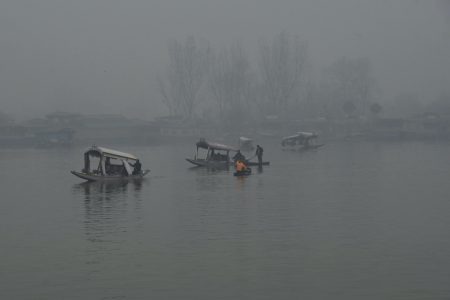The Meteorological (MeT) office predicted cold, dry weather for the next 24 hours in the union territory, which contributed to the extreme cold that persisted in Jammu and Kashmir on Sunday due to the closing gap between the maximum and minimum temperatures.
In Srinagar city, Saturday’s high temperature was 5.8 degrees Celsius, while Sunday’s low was minus 3 degrees.
Saturday’s high temperature in Gulmarg was 2.4 degrees, while Sunday’s low was – 5.6 degrees. In a similar vein, the lowest temperature in Pahalgam was minus 6.2 degrees, while the highest was 4.8 degrees.
Jammu city had 10.5 degrees, Katra town 8.4, Batote 4.6, Banihal 0.7 and Bhaderwah 2.5 as the minimum temperature.
A MeT office statement said, “On January 12, generally cloudy in the morning and forenoon, and improvement thereafter. On January 13, mainly clear with dry weather. On January 14, generally cloudy with dry weather. On January 15 and 16, generally cloudy with light snow at isolated higher reaches. On January 17 and 18, generally cloudy.”
Locally referred to as the “Chillai Kalan,” the 40-day period of extreme winter cold began on December 21 and will conclude on January 30. Kashmiris use a loose tweed overgarment known as the “Pheran” to stay warm during this 40-day period of extreme cold. They have a firepot beneath the Pheran that is woven in a willow wicker basket known as the “Kangri.” The two assist residents in surviving the Chillai Kalan and warding off the cold.
Doctors have advised individuals to protect themselves against prolonged exposure to extremely cold temperatures, especially for youngsters and the elderly. Blood vessel constriction is the result of hypothermia brought on by excessive cold. Heart failure and attacks are caused by narrowed blood arteries.
Residents can no longer avoid using Pheran and Kangri since financially strapped Jammu and Kashmir cannot afford to give its customers with a 24-hour electric power supply.
Authorities blame the large discrepancy between the supply and demand of electricity on transmission losses, consumer-charged cheap prices, and even referendums.




